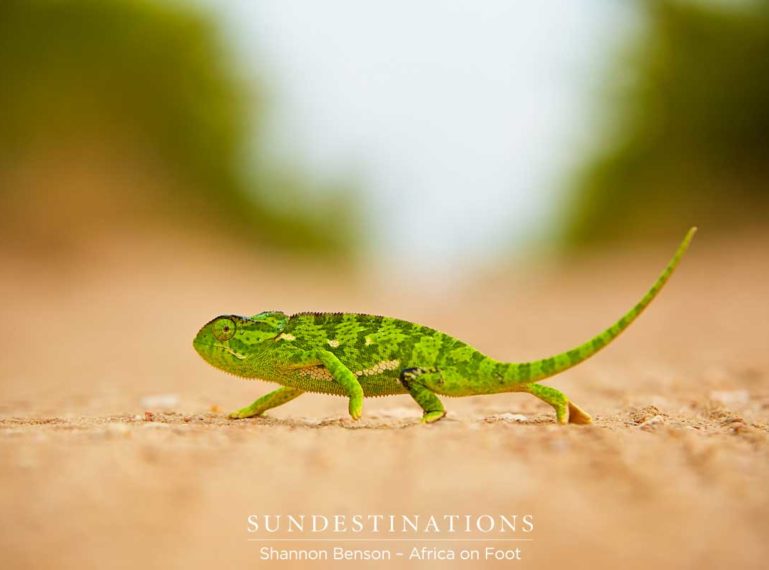
Everyone knows the song, and just about everybody can’t resist singing the chorus… what are the rest of the lyrics anyway? This (karma karma karma karma karma) chameleon was photographed by Shannon Benson (@shannon_wild), while on a photography assignment in the Klaserie. Being overly obsessed with reptiles, Shannon spent some time capturing this little beauty in some wonderful light at Africa on Foot, and we thought we had to share the pictures with you.
The flap-neck chameleon is the only species of its kind to be found in the Lowveld (Kruger Park region) and it is frequently spotted just in time while it is crossing the road. Just like this one, his life was spared when he was seen on the road just in front of the vehicle! When chameleons are seen on the ground, they are most likely seeking mates or looking for soft soil in which to lay their eggs. We most often see them on the ground because they are so difficult to spot in the trees!
Everything about the chameleon is designed for camouflage, from its cryptic coloration to its fused opposable toes and its staggered style of walking. The fact that chameleons change colour is not to enhance its camouflage, but rather it is to reflect its mood or temperature. When one picks up a chameleon and notices the change in its colours, it is usually because the creature is stressed, and its nerves are causing a flood of the pigment, melanin.
Crossing the road is risky for a chameleon because it could be run over by a vehicle, or it could be snatched up by one of its eager predators, which include cuckoo hawks, boomslangs, hornbills, vervet monkeys, shrikes, and starlings. Moving it out of the road may have been a favour to this little guy! The chameleon was placed in the safety of a tree in the direction it was going so as not to disturb its mission too much.
Living in an arboreal habitat, flap-neck chameleons are a brilliant green in colour to match the leaves, and they move in a jerky fashion, which is said to disguise its movement with the movement of leaves in a tree. Its ‘two toes’ and prehensile tail help it to keep stable, while its almost 360-degree individually rotating eyes can keep them aware of their surroundings. Chameleons eat insects, which they catch with their excessively long, sticky tongues, propelling them out of their mouths at 5 miles per second!
Often chameleons are seen at night when game drive turns into night drives and the tracker/ranger uses a spotlight to help see the nocturnal creatures. A trick of the trade (courtesy of ranger-turned-photographer Kevin MacLaughlin) as to why your incredible ranger can see something as small as a chameleon in a tree while driving at night, is that chameleons become pale at night when their blood is concentrated around their organs to help regulate their body temperatures. These little creatures appear so pale in the spotlights that they are almost difficult to miss!
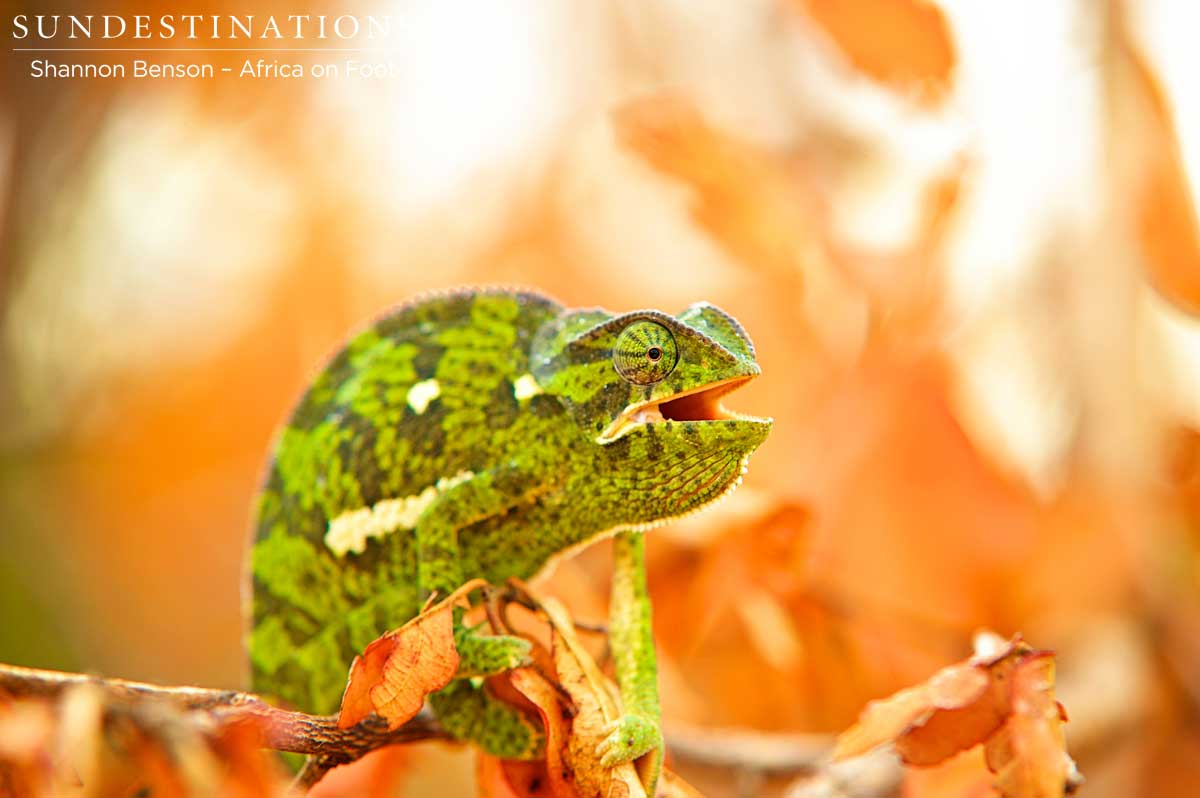
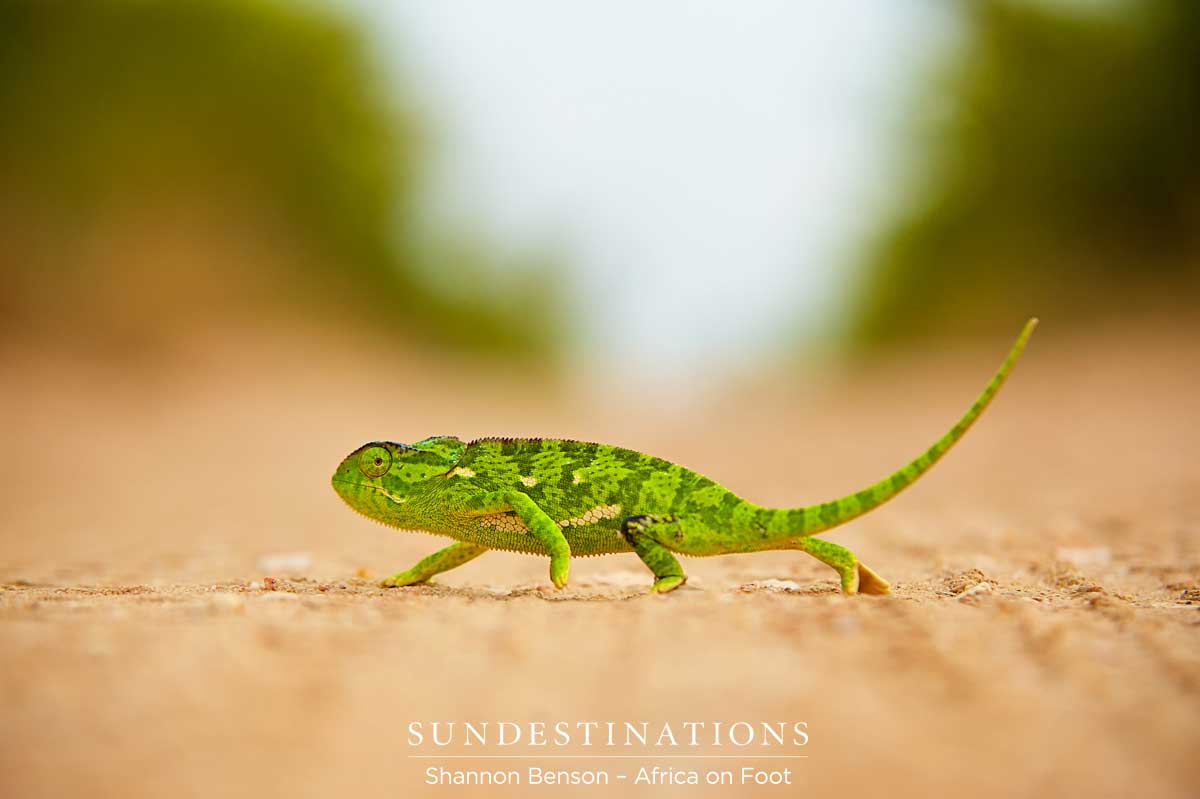
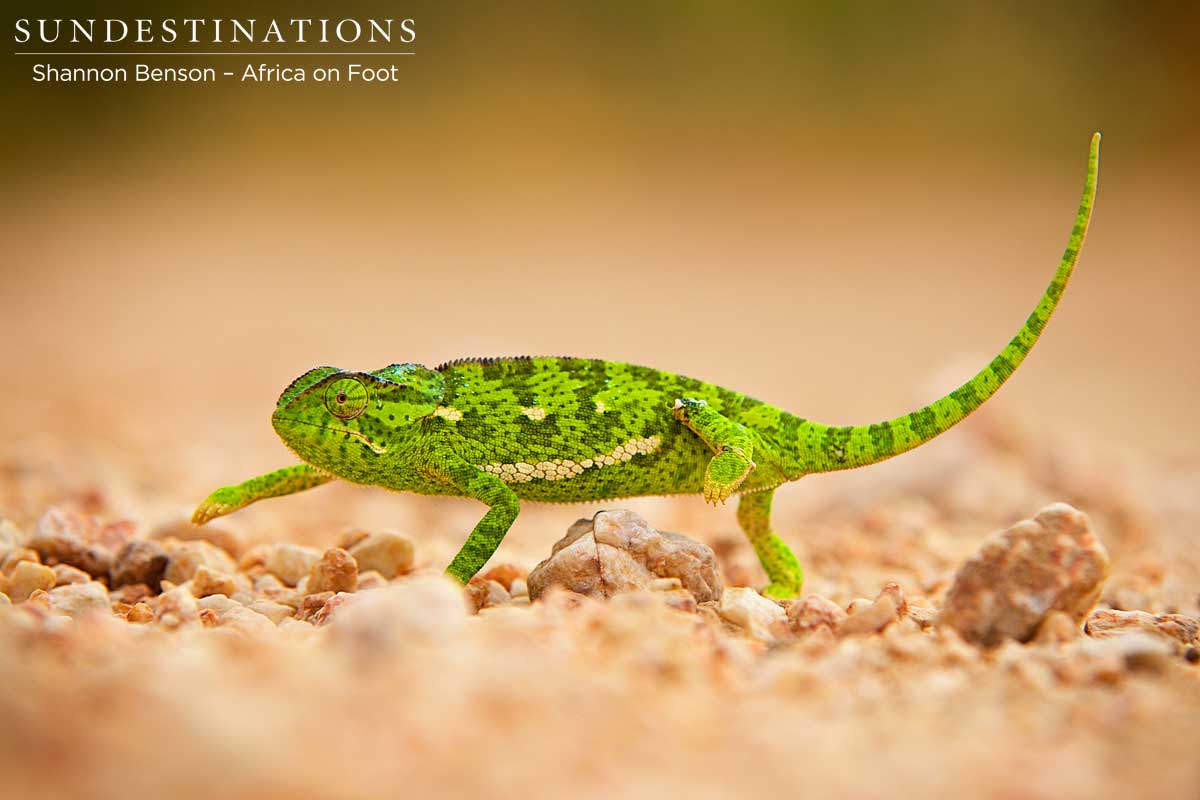
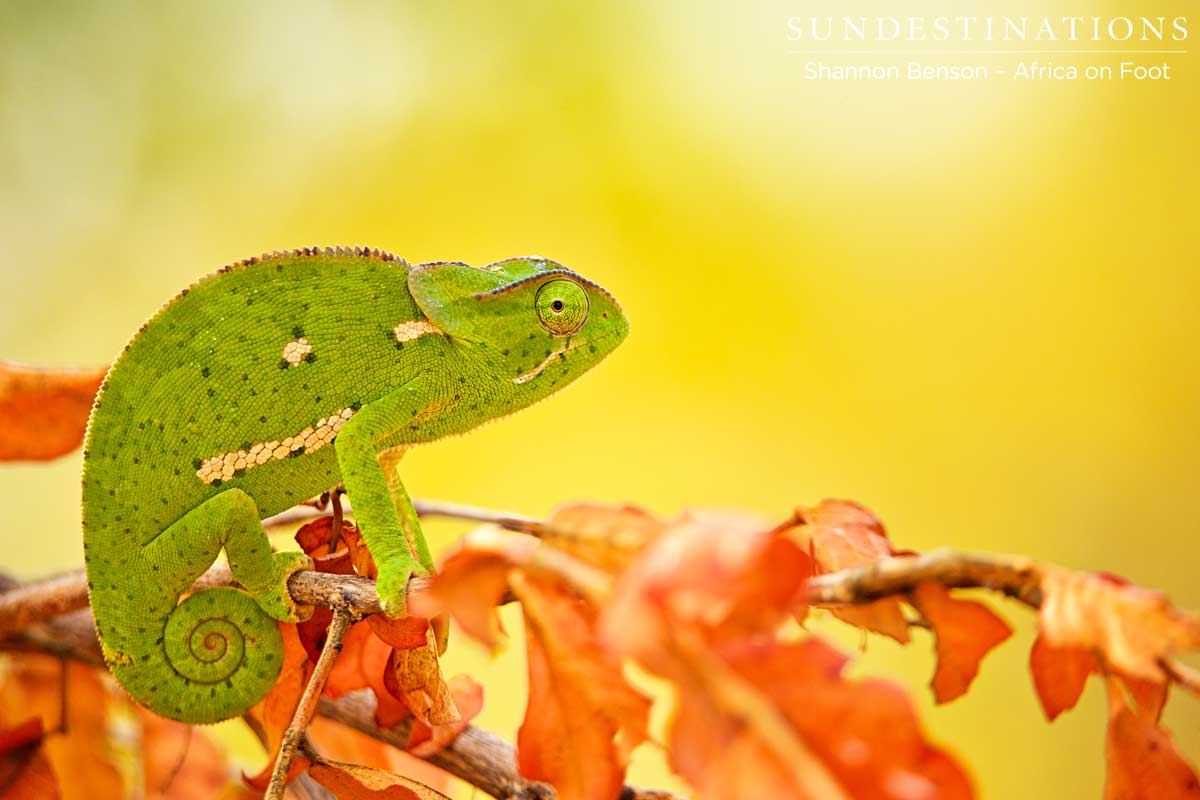
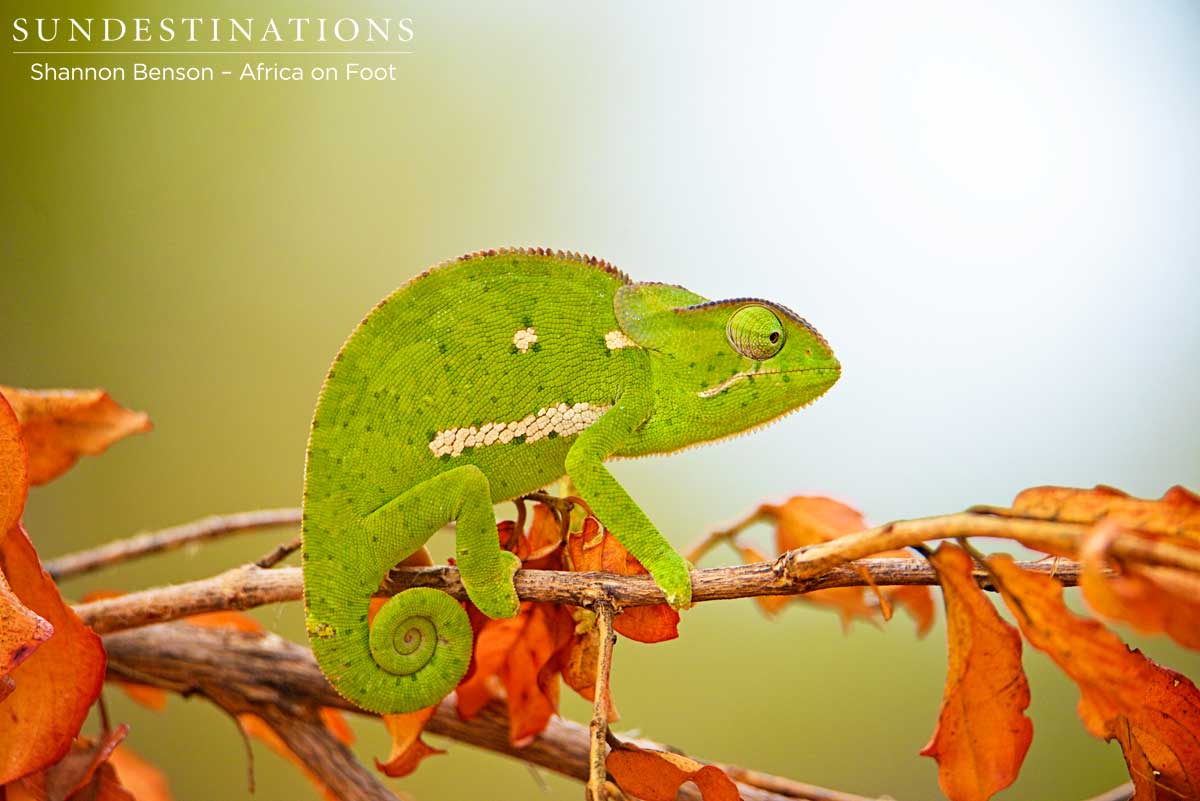
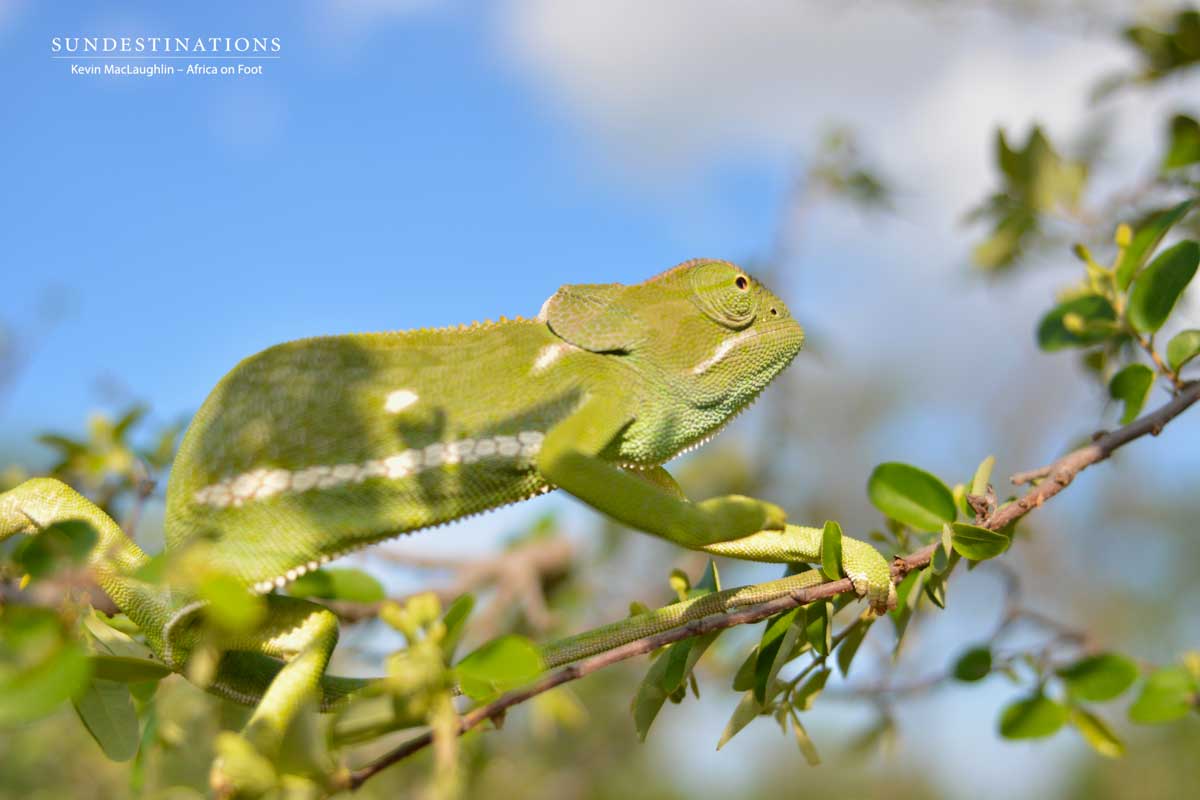
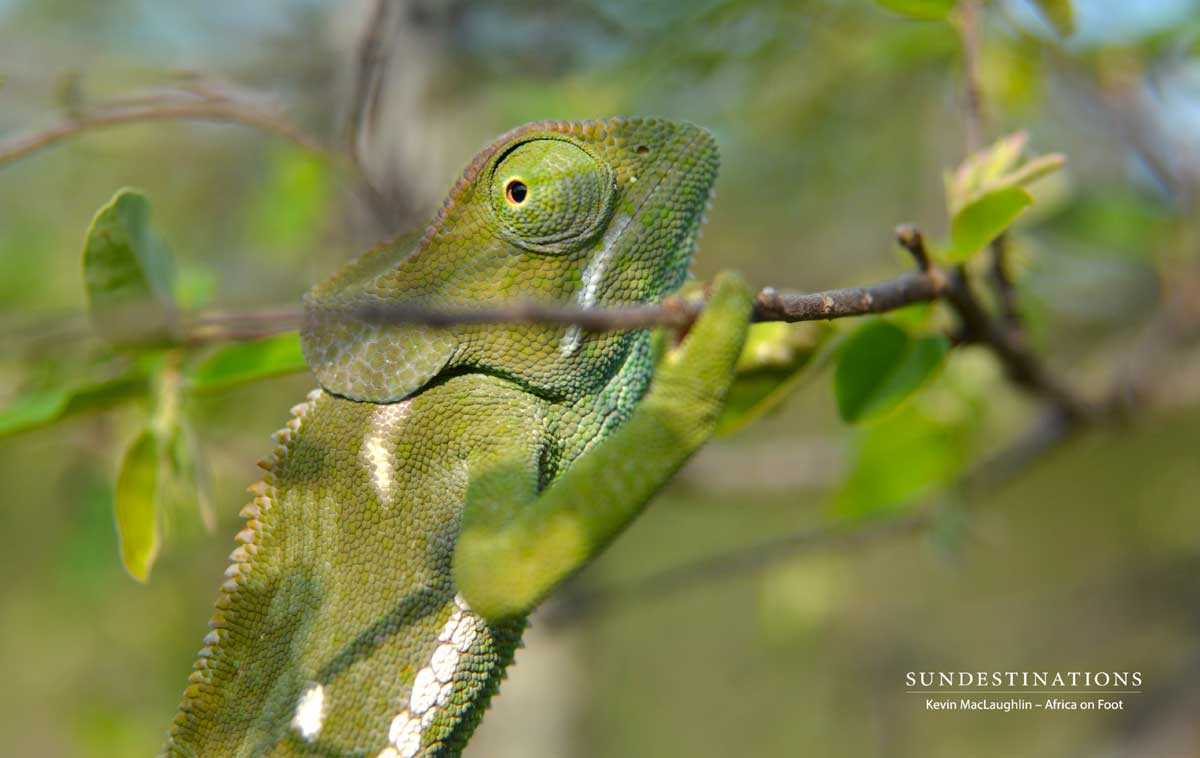
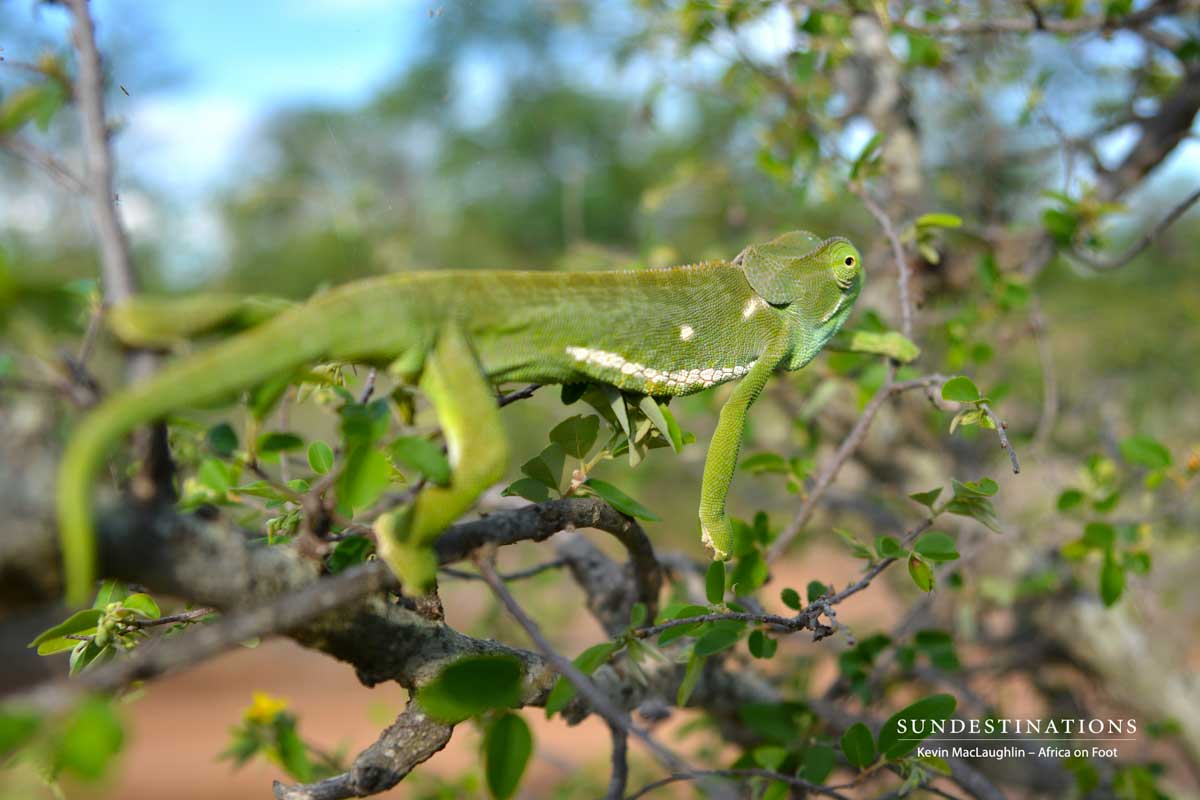
Leave a Comment